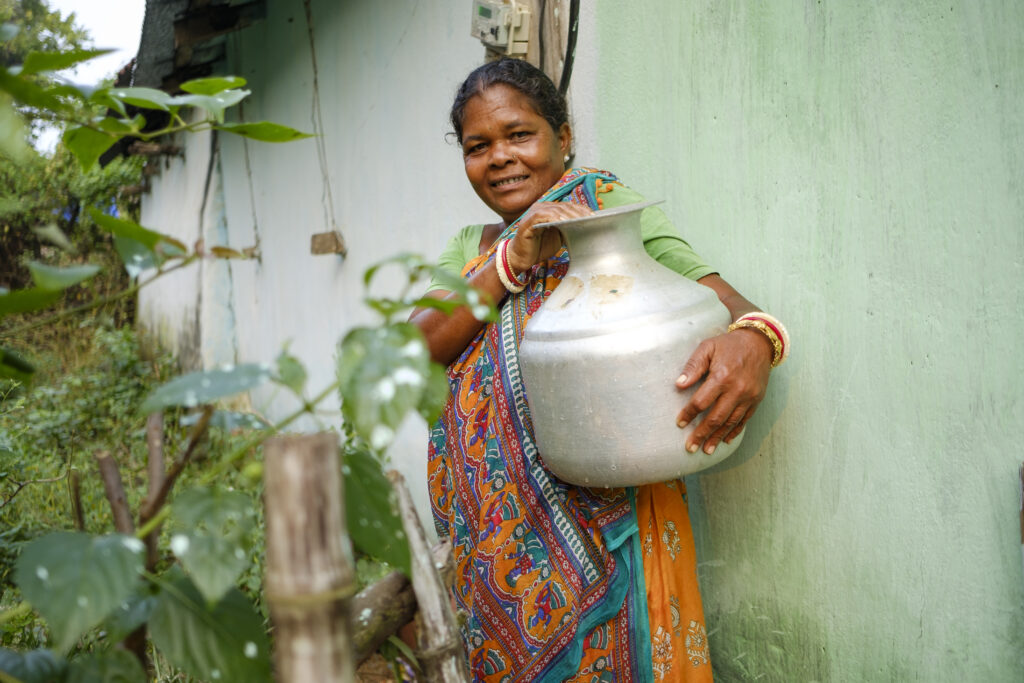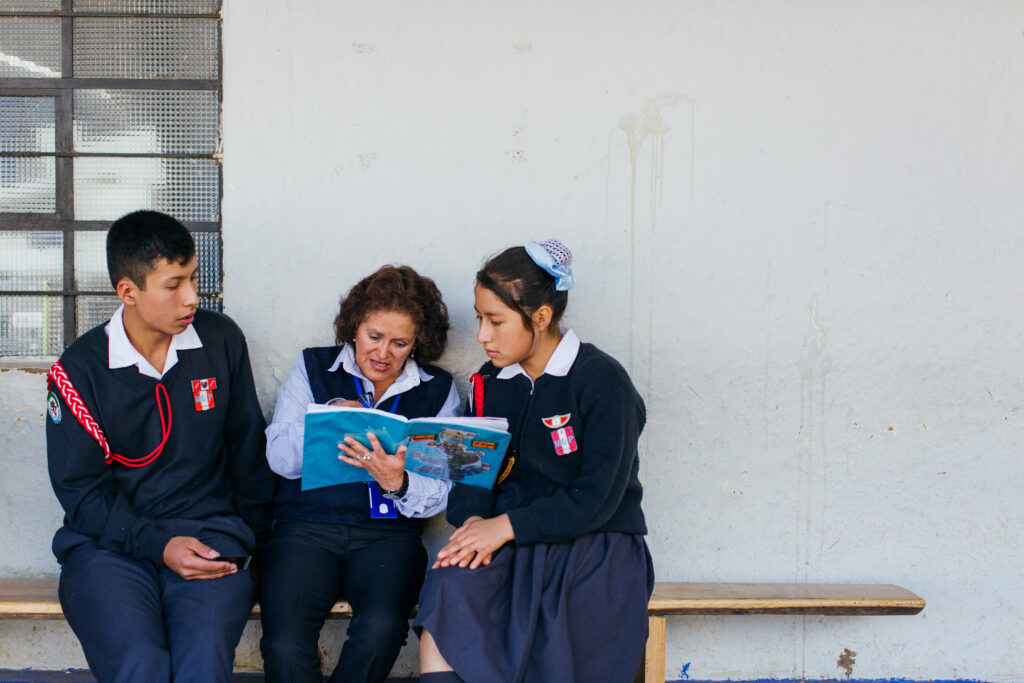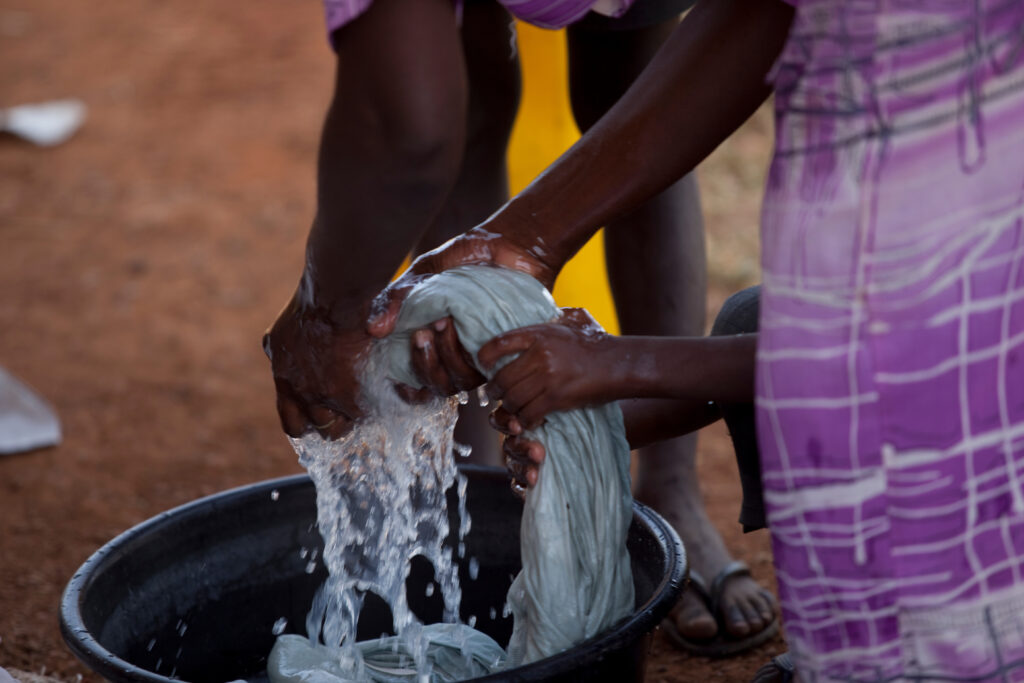By Grace Kanweri, Kelly Latham, and Azucena Serrano, June 2022
Lea en español aquí
The impact that climate change has on the environment and on our daily lives is apparent. Floods, droughts, and other unexpected weather events occur more regularly, disproportionately affecting low-income communities. To learn more about the impact of climate change on WASH services, we interviewed Kelly Latham, Senior Global Advisor for Climate and Water Resources Management (WRM), Grace Kanweri, Senior Programme Officer on the Water For People Uganda team, and Azucena Serrano, Monitoring Specialist on the Water For People Honduras team.
1. How does Water For People’s work relate to environmental protection?
Our work depends on and is driven by environmental protection. Safe drinking water depends on the availability of clean water in the environment. If water sources dry up or are too contaminated to treat affordably, there is no water available for human consumption. When we protect watersheds, we ensure sustainability of source water.
Our work in sanitation is driven by the need to protect human health and the environment. When we promote and invest in safe sanitation management, we prevent environmental pollution. We work along the entire sanitation service chain from household facility construction to emptying, transport, treatment, and disposal/re-use to prevent untreated waste from entering the environment.
2. What are the risks of environmental degradation and how would this affect the global water supply?
There are several risks due to environmental degradation:
- Decreased source water quality and quantity: Vegetation, soil types, and slopes of the land surrounding water sources impact whether rainfall is stored or runs off and whether contaminants are carried to water sources. Application of agrochemicals and human and animal feces on nearby land can impact the quality of water. As the population grows, pressure to cut down trees to develop land for homes, agriculture, and businesses increases, pressure to extract groundwater also increases. Although the amount of water needed for drinking is relatively low compared to other uses, such as agriculture and industry, it is becoming difficult to find sources that are clean enough and of sufficient quantity to provide safe drinking water affordably and sustainably.
- More expensive services: As water sources run dry and water quality worsens, service provision becomes more expensive. Alternative water sources, more storage, and additional treatment are needed and require increased investment.
- Drop in service levels: As source water quality and quantity decrease and infrastructure becomes more expensive, declines in service levels are more common. Seasonal shortages and service interruptions increase. Water quality can also worsen at specific times of year when first flush rain events carry pollutants that have been accumulating on the land over the dry season.
3. What is the impact of climate change on WASH systems and resources?
No place where Water For People works is immune to the hazards of climate change. Climate change manifests in the form extreme weather conditions, which affect water quantity and quality. It threatens the availability of clean water in the environment in the following ways:
- Polluted Water: Flashier rain events and increased flooding can cause increased pollution. For instance, intense rains on degraded lands can cause erosion and increased pollutant loads to nearby water resources. Flooding, especially in areas with limited safely managed sanitation services, can cause the spread of contaminants and disease. Extreme events can cause disease outbreaks, such as cholera.
- Too Little Water: Increased temperatures, decreasing rains, droughts, and less predictable rains can impact both the supply of and demand for water. Supply decreases as flows reduce, and demand cycles change as weather patterns change. Both the increased pressure and the unpredictability of water supply and demand present risks. In Uganda, for example, climate change is creating a detrimental cycle in communities. Long dry spells affect the profitability of agricultural production, leading communities to seek out water-based ecosystems such as wetlands. As these ecosystems cannot sustainably substitute the role of rainfall in supporting crop and animal production, this practice leads to degradation. In turn, the encroachment on these water resources vital to human activities is leading to long dry spells, among other long-term effects.
- Too Much Water: Extreme weather events such as floods and hurricanes, which often come with extreme winds and landslides, can cause direct damage to water and sanitation infrastructure. In Honduras, for example, hurricanes are becoming more common, and some communities are experiencing water shortages due to prolonged summers and contamination of water sources due to high runoff in winters.
Other impacts such as rising sea levels are indirect, insidious, and uncertain in nature and severity and can damage infrastructure or lead to out-migration from coastal areas. Different risks are more prevalent in different contexts, but all are relevant when considering the diverse locations where we work. Some places, like in Honduras and Malawi, experience all risks.
4. Why should WASH systems be included in national climate change adaptation plans?
In recent years, climatic events, accelerated environmental degradation, and high-water demand have led to significant pollution of water sources and food shortages. Community resilience is the goal of climate change adaptation, and there is no way for a community to be resilient if the water and sanitation services are not resilient. The amount of water needed for drinking purposes must be protected to last through climate-related emergencies. This is especially true in low- and middle-income countries where we work, where communities are not causing the problem but are feeling the impacts of climate change. National plans for climate change adaptation must prioritize these communities by taking measures to mitigate these risks and recognize that resilient WASH is at the center of resilience for these communities.
5. What actions can WASH organizations and businesses take to improve the climate change situation? How can the government support these groups?
The call to action to fight climate change is for everyone – companies, nonprofits, governments, and individuals who must all work collaboratively to achieve climate change goals established through Sustainable Development Goal 13 and updated agreements from the UN Climate Change Conference (UNCCC) and Conference of Parties (COP). It is paramount to mainstream climate change in all WASH and water resources management plans, programs, and policies so they are sustainable.
Governments can support in providing an enabling policy environment, incentivizing water resources monitoring, and holding all actors accountable to comply with national environmental standards. As a WASH sector, which includes NGOs like us, governments, and service providers, we can combat climate change by:
- Continuing to advocate for the inclusion of WASH in National Adaptation Plans and extend that advocacy to all investors in WASH. We all have a role to help those outside of the WASH sector see that resilient WASH is climate action.
- Apply an adaption lens across all building blocks of the WASH system. For example:
- Assess climate-related risks and plan for too much, too little, or more polluted water, depending on the context.
- Protect water sources considering the broader recharge zone through catchment and aquifer management.
- Design service delivery schemes that can respond to unpredictable rains and droughts.
- Build climate-resilient infrastructure that considers extreme weather events and floods.
- Include climate-resilient WASH in national finance strategies and local planning.
- Improve sustainability and efficiency of water quality and quantity monitoring systems to improve decision-making.
- Identify ways to mitigate climate change by considering greenhouse gas in the delivery of water and sanitation services. For example, shifting to renewable energy sources such as solar and increasing energy efficiency across the entire service chain, from source to household for water and from household to disposal/re-use for sanitation.
As an international NGO with headquarters based in a high-income country, we also have a responsibility to consider the ways our operations are contributing to greenhouse gas emissions. We cannot undermine our efforts to strengthen communities’ abilities to adapt to climate change while continuing to contribute to the cause of climate change. We should adopt a principle of Net Zero, which means making changes to reduce carbon emissions to the lowest amount and offsetting as a last resort. The offsetting is used to counteract the essential emissions that remain after all available reduction initiatives have been implemented considering direct and indirect emissions.
When looking across all needs and the urgency of the climate crisis, we must all act now!
6. Are there any local WASH initiatives being implemented to prevent environmental degradation?
As a key component of our Everyone Forever model, when we develop infrastructure projects, we also strengthen service authorities and providers to ensure sustainability of WASH systems.
In Uganda, for example, initiatives are aimed at both mitigation of and adaptation to climate change impacts. Mitigation initiatives include: restoration of wetlands and other water resource-related ecosystems to allow regeneration; catchment-based water resources planning and implementation, including reforestation; promotion of clean energy by gradually replacing diesel-based water supply with solar pumping; and fecal sludge management, such as treatment and reuse in the form of briquettes, aimed at reducing the use of food fuel that depletes forest and vegetation cover and tree planting. Adaptation initiatives include: catchment conservation interventions in upper, mid, and downstream areas; water quality analysis and surveillance; water safety planning for water quality management; groundwater monitoring; and sanitation improvement campaigns in households and public institutions to overcome fecal contamination in surface and groundwater in times of emergencies such as floods.
In the case of Honduras, municipal policies and strategic plans include guidelines for the protection of micro-watersheds and water quality. In El Negrito, the Community Association for the Acquisition and Protection of Micro-watersheds (ACOMIC, in Spanish) was created to continue preserving forests for the primary purpose of sustaining drinking water sources. They knew that building resilient communities is more feasible through an association linked to a solid system, such as the WASH system.
The conclusion is clear: the effects of climate change demand an immediate call to action from governments, businesses, NGOs and citizens, it is not an issue that can be postponed any longer. Access to water, so essential to daily life, is being directly affected by climate change, so it is important to include the WASH sector in climate change adaptation actions.
As an NGO that aims to achieve universal and sustainable WASH services, Water For People is committed to continue advocating for climate action. Learn more about our efforts in this joint working paper with IRC on the links between climate change, WRM, and WASH and this paper co-authored with The Nature Conservancy, Forest Trends, and Tetra Tech/USAID Sustainable Water Partnership on the important crossroads of WASH service delivery and source water protection.



